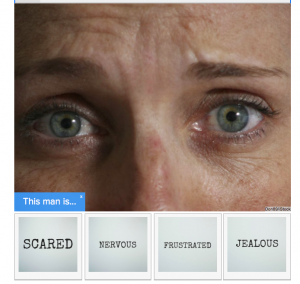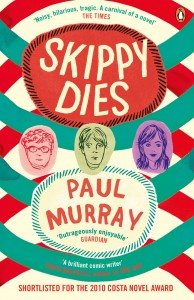
I’ve recently been thinking that in my eagerness to help students understand and appreciate how writing works, I’ve perhaps over complicated things with my OCD spreadsheet of writing techniques.
When you read something – an article, a poem, a story, a personal essay – zoom in on a section and ask yourself:
- What does it make me think?
- How does it make me feel?
It really is that simple.
Once you’ve figured out what you think & how you feel about what you’ve just read, ask yourself
- How did they do that then?
This is where techniques – the word choice, verb choice, 5 senses, emphatic statements, rhetorical questions, humour, lists, twists & assonance etc… come in!
You look at the beauty of the thing (at how it makes you feel & the thoughts that flood through your mind when you first see it) but you should also try to figure out how it was put together.
I’ve been comparing it lately to the difference between looking at a Ferrari, admiring how beautiful it is; perhaps even taking it for a ride…

and actually lifting up the bonnet to see how it works!

If you’re like me, you don’t really care how the car works, as long as it works. However, you and I will most likely never have to build a car. On the other hand, we will use language for the rest of our lives and the more we understand about how it works, the better we’ll be able to use it to communicate with our partner and our kids and our friends and our bosses and our colleagues and the world!
Now apply this analogy to reading. When you first see it, treat it like a Ferrari. Is it beautiful? How do you feel when you first see it? What does it make you think about?
Then look under the bonnet and appreciate the skill involved in creating it.
DON’T simply learn off the general impact of a technique (lists bombard us with information; rhetorical questions make us sit up & pay attention); instead analyse the SPECIFIC impact of this SPECIFIC example on YOU!
So if you see a list, look at it in context.
Here’s an example of writing that uses a list:
“The morning started off badly. It was raining when I woke up, which reminded me of the leak in my car I’d been ignoring for weeks and the air outside seemed warmer than inside when I went out to defrost the windscreen. My skin was so dry there was no way I was putting make-up on but I knew this was the wrong way to impress my new boss. Sitting into my car, the musty smell permeated my bones and I glanced down to see toothpaste stains flecking my smart navy belted dress. But it was too late now to go back in and change! Sigh… Instead, I twisted the key in the rusty ignition with a sad little slump of my shoulders”
What does this make me think? How does it make me feel? And HOW does it produce these thoughts and feelings? (Try to integrate thoughts, feelings & techniques in your answer)
Sample answer:
I really like the authors list of minor catastrophes which blight her morning. I instantly felt sympathy for her as she admitted her very human tendency to ignore problems (the leak!) until they cannot be ignored anymore. I also wondered whether or not money was part of the reason why she hadn’t had the car fixed, as she also mentioned the lack of heating in her house (“the air outside seemed warmer than inside”). The overall impact of this list was to create the impression that this is a woman who is struggling to keep it all together. She’s eager to impress; after all, she’s wearing a “smart belted navy dress” but the toothpaste stains and the musty leaky car suggest that there’s a gap between the person she wants to be and the person she really is. Listing off all of these details from her morning routine as she heads out to work is a subtle yet effective way of developing her character and simultaneously arousing our sympathy for her.
Now let’s look at a different list, used in a different context, for a different purpose.
“The litany of failures covered up by our government should stop us in our tracks. Consider the obscene salaries paid to tax-funded charity bosses; the appalling treatment of our Garda whistleblowers; innocent babies dying in under resourced maternity hospitals; record unemployment; chronic homelessness; exploding emigration figures and a political class so far removed from the lives of ordinary people that their major concern is whether or not they should issue an apology for any of this in the Dáil”
What does this make me think? How does it make me feel? And HOW does it produce these thoughts and feelings? (Try to integrate thoughts, feelings & techniques in your answer)
Sample answer:
The author’s list of our governments failures is genuinely frightening. Unlike the drip feed of individual scandals which pepper our days as we tune in and out of the news on radio and in print, this list brings them all together as a stark reminder of the current state of the nation. The language is far from neutral however – the words “obscene” “appalling” “dying” “chronic” and “exploding” are all deliberately chosen to evoke an indignant and angry response in us as we read. Personally, I don’t normally respond to this kind of sensationalism. What I refer to as a ‘tone of moral outrage’ – think the kind of person who rings in to Joe Duffy’s radio show – generally makes me tune out! However, in this case, the examples given are so powerful that I did find my blood pressure rising as I read. I also think the use of contrast at the end of this list (distinguishing between the ‘political class’ and ‘ordinary people’) is a stroke of genius, as it makes politicians’ concerns seem petty and arrogant in the extreme.
You’ll notice that I’m discussing the same technique, but my answer is very different because the example I’m discussing is very different in each case.
Finally, consider this.
When you read any piece of writing, you should have a response. Every response is valid, including confusion and indifference. However, if a student tends to respond to everything he or she reads with indifference & confusion, I usually ask them to slow down, try again, see if there’s something there they might have missed the first time. Don’t try to understand every single image; instead tune in to the lines that sing for you, that speak to you, that twist your gut or make your heart soar or your eyes well up with tears.
Hopefully this helps!
Evelyn










